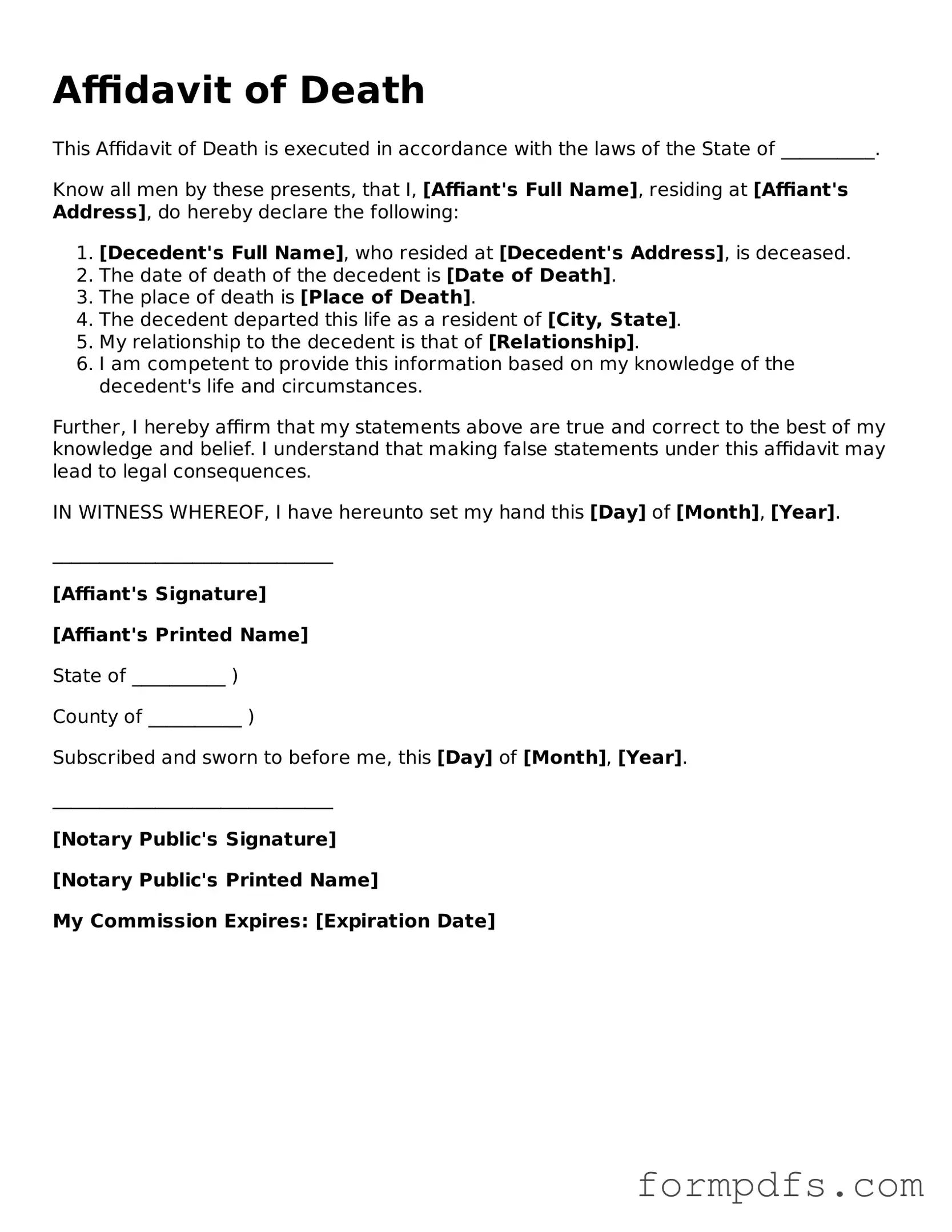What is an Affidavit of Death form?
An Affidavit of Death form is a legal document used to declare the death of an individual. It is often required in situations where the deceased’s assets need to be transferred, or when settling an estate. This document serves as a formal statement, typically signed by someone who has knowledge of the death, confirming the individual’s passing and may include details such as the date and place of death.
Who can file an Affidavit of Death?
Generally, any person who has personal knowledge of the death can file an Affidavit of Death. This might include a family member, a close friend, or an executor of the deceased's estate. It is important that the person filing the affidavit is able to provide accurate information regarding the death and can sign the document in the presence of a notary public.
What information is typically included in the Affidavit of Death?
The Affidavit of Death usually includes the full name of the deceased, the date and place of death, and the relationship of the affiant (the person filing the affidavit) to the deceased. Additional details may also be included, such as the deceased’s date of birth and social security number, to help identify the individual clearly. The document must be signed and notarized to be considered valid.
Why is an Affidavit of Death important?
This form is crucial for legal and financial matters following a person's death. It helps facilitate the transfer of assets, allows for the settlement of debts, and assists in the administration of the deceased's estate. Without this affidavit, beneficiaries may face delays in accessing funds or property, making it an essential step in the process of dealing with a loved one's estate.
